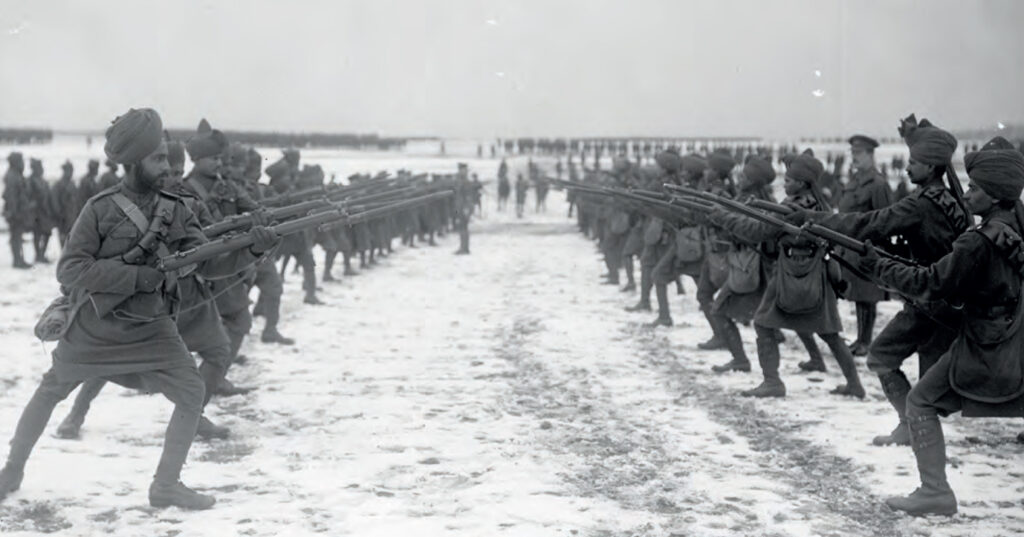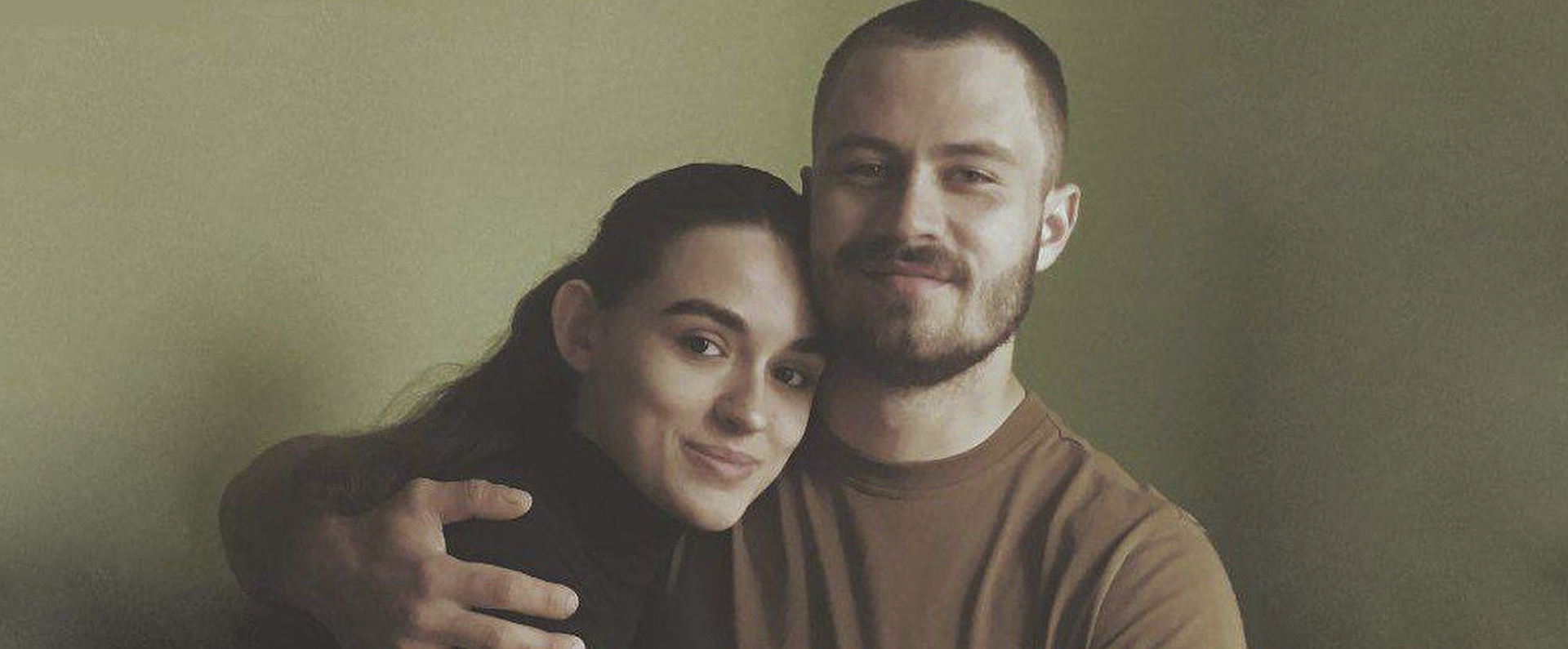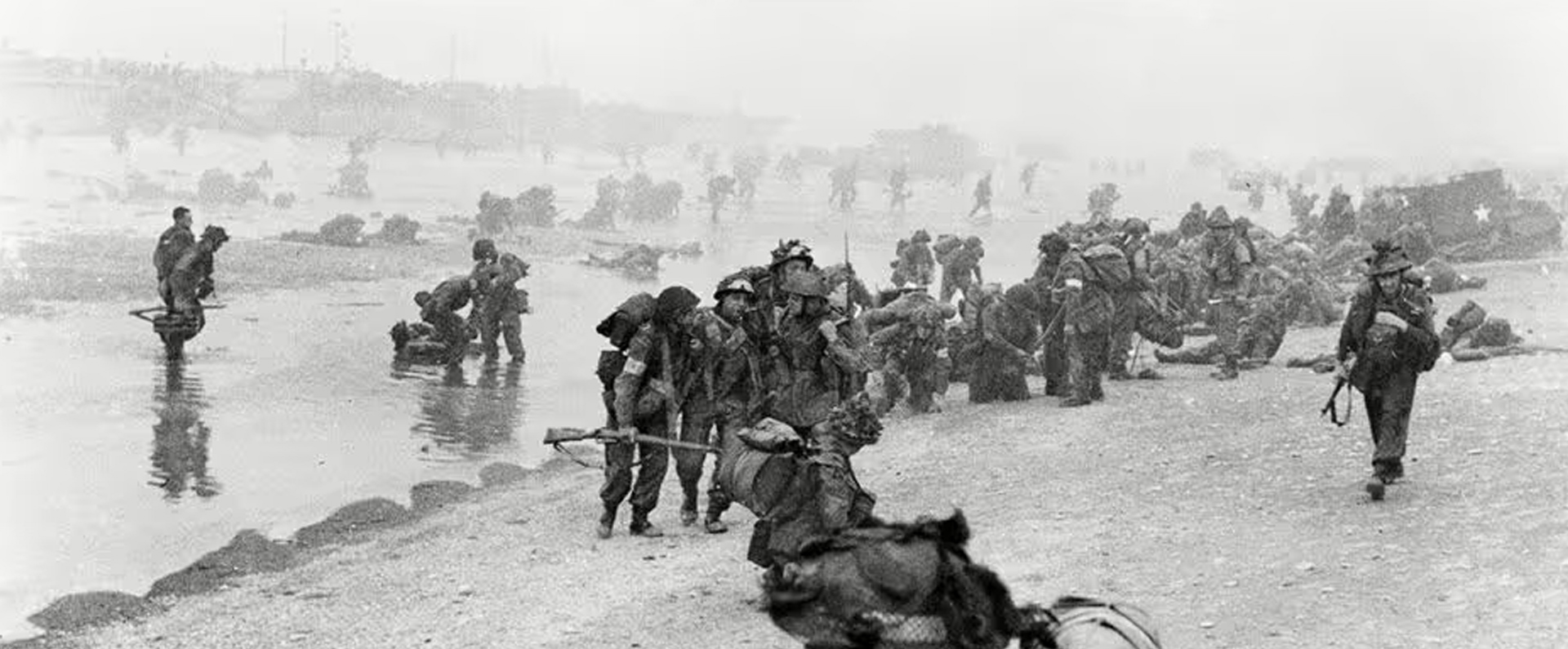
Published in Britain at War in December 2019.
Subadar Khudadad Khan VC
Khudadad Khan had the honour of two notable “firsts” in the world of gallantry honours: he was the recipient of the first VC awarded to a Muslim and also the recipient of the first such decoration made to an Indian.
Khudadad Khan was born on October 26 1888 in Jhelum, Punjab, India (now Pakistan). He was from a family of Pathans who came originally from the North West Frontier, bordering Afghanistan.
Khan had enlisted as a sepoy in the 129th Duke of Connaught’s Own Baluchis, Indian Army, in October 1906 at a time when the regiment was recruiting on the North-West Frontier.
In August 1914, Sepoy (the equivalent to a private) Khan was initially sent to the Suez Canal Zone but he was then diverted to France because of the urgent need for more Allied troops. He was among 20,000 Indian troops sent to the front line to help the exhausted British Expeditionary Force (BEF) try to stop the Germans from capturing the strategic ports of Boulogne in France and Nieuwpoort in Belgium.
On October 18 1914, he moved with the Ferozepore Brigade from Orleans, France, to be attached to the British Cavalry Corps that was attempting to hold the line between Zandvoorde and Ploegsteert Wood, Belgium. On October 22, his regiment joined the 3rd Cavalry Brigade, moving to join the line the following day.
By this point, fighting was raging all along the front line as both sides tried to gain the advantage. The Germans were aiming to make a breakthrough in the Gheluvelt sector of the Ypres Salient, while the British 2nd Cavalry Division advanced from Hollebeke Chateau, between Ypres and Comines in a south-easterly direction.
On October 30, during the First Battle of Ypres, the enemy repulsed the advancing 2nd Cavalry Division and captured the Belgian town of Hollebeke. Conditions for the 129th Baluchis were appalling: they faced the well-equipped advancing Germans from a position of water-logged trenches, with insufficient hand grenades and with gaps in the line due to a shortage of soldiers. The Germans were determined to push further forwards and in fighting the next day, October 31, they outnumbered the Allies by an estimated five to one.
However, Col W.M. Southey, the Commanding Officer of the 129th Baluchis, later reported favourably on a small part of the fighting that day: “We formed up at about 3 a.m. and advanced on the left of the farm. We killed about three and wounded three and those who had not bolted, surrendered, fourteen in number.”
Early on October 31, during further fighting, one of the Baluchi regiment’s two Maxim machine-guns was destroyed by enemy fire in an attack that had wounded a British officer. Also wounded by the relentless enemy fire was Sepoy Khan, then 26, one of six men from his detachment who had been tasked with manning the second Maxim machine-gun.
As the battle intensified, Khan shrugged off his serious injuries to the upper part of his body and continued to work his gun as German shells rained down on the six men. One by one, Havildar Ghulam Mahomed, Sepoy Lal Sher, Sepoy Said Ahmed, Sepoy Kassib and Sepoy Afsar Khan were killed by enemy fire.
When his position was eventually overrun by the Germans, Khan initially feigned death, but not before putting the machine-gun out of action so that the much-prized weapon did not fall into enemy hands. Eventually, once the German soldiers had left the scene, he crawled back to rejoin his company and to receive medical aid.
During the battle, 164 Baluchis were killed or wounded and 64 others were missing in action. A further three British officers were killed and three more wounded, while three Indian officers were killed and two wounded. Khan was treated in hospital for his wounds and then transferred for further treatment to the UK, where he was initially taken to Brighton but later spent several weeks at the Indian Convalescent Home, New Milton, Hampshire.
Khan’s VC was announced in the London Gazette on December 7 1914 when his brief citation, in truth, failed to do full justice to his astounding bravery. It simply stated: “On 31st October, 1914, at Hollebeke, Belgium, the British Officer in charge of the detachment having been wounded, and the other gun put out of action by a shell, Sepoy Khudadad, though himself wounded, remained working his gun until all the other five men of the gun detachment had been killed.”
As stated, Khan was both the first Indian and the first Muslim to be awarded the VC: he received it as an Indian under the terms of the Royal Warrant of 1911, which extended the reward to native troops. Previously Indians who showed exceptional gallantry received the Indian Order of Merit (1st class). The other five men manning the second machine-gun on October 31 received posthumous gallantry awards.
Initially, Khan was too weak to attend his planned investiture but he eventually received his VC from George V at Buckingham Palace on January 26 1915. On the same day the Daily Mirror newspaper highlighted Khan’s bravery under the headline” The first Indian to win the Victoria Cross.”
They carried a photograph of Khan and wrote: “This is Sepoy Khudadad Khan, of the 129th Duke of Connaught’s Baluchis. He was the first Indian soldier to win the coveted honour of the VC through gallantry on the field of battle. He worked a gun single handed although wounded. All his
In the aftermath of the Great War, he served on the North West Frontier, India (now Pakistan), and in the Third Afghan War. After retiring in 1921, in the rank of subadar (equivalent to captain) he worked as a farmer and, in 1956 and by then 68, he took part in the VC centenary celebrations in London.
Khan, who was married twice and had two sons and a daughter with his second wife, died at the Military Hospital, Rawalpindi, Pakistan on March 8 1971, aged 82. He was buried in an unmarked grave at Rukhan Tehsil cemetery, Punjab, Pakistan. His name is engraved on the Memorial Gates, Hyde Park Corner, London, and there is a statute in his honour at the Army Museum, Rawalpindi, Pakistan.
For a time, Khan’s medal group was on display at the Army Museum in Rawalpindi but it remained in the ownership of one of his descendants. When the relative decided to offer the medal group for sale, I was able to secure it in a private deal in 2016.
We should never forget that Muslims made an immense contribution to the Allied effort during the Great War, and beyond. Of the 1.3 million Indians who constituted the volunteer force during the 1914-18 global conflict, approximately 400,000 were Muslims. It has been estimated that some 50,000 Indians were injured and 8,500 killed on the Western Front alone. Around a third to a half of these war-dead were Muslims, who fought – and sometimes died – alongside their fellow Hindu and Sikh countrymen. Many of the those who were missing in action, and are named on the Menin Gate war memorial in Belgium, were Muslim.
In a world in which a tiny minority of Muslims – notably those fighting for the Islamic State of Islam and the Levant (ISIL) and those extremists responsible for terrorists acts around the world – tarnish their religion, the purchase of Khan’s VC provided a wonderful opportunity for people to recognise the many, loyal and brave Muslims who have risked, and sometimes given, their lives for Britain, its Allies and for wider freedoms.
In fact, in 2014, two former heads of the Army had called for greater recognition of the bravery Khan as the first Muslim soldier to be awarded the VC. This was intended as a “riposte” to the “sickening extremism” of ISIL militants. General Lord Dannatt and General Lord Richards led a group of peers, MPs, historians and religious leaders who argued that children should be told about the role played by Muslim troops in the Great War.
In a letter to The Daily Telegraph, penned in October 2014, the group said that the actions of Khan “exemplified the courage” of the many Muslims who served in the Great War.
They added that the knowledge of his role, together with that of the other 400,000 Muslims who fought alongside British troops, is vital to “fully understand the multi-ethnic Britain that we are today”.
British Future, the think tank behind the letter, believed that the commemoration of Khan and the other Muslim soldiers would act as a rebuttal to Isis Islamic extremists. At the time, it had been claimed that more than twice as many British Muslims had travelled to Syria to fight alongside jihadists than were serving in the Armed Forces.
Dilwar Hussain, a Muslim academic and one of the signatories of the letter, said: “The quiet dignity of our commemoration of Khudadad Khan’s bravery and service is perhaps the most powerful riposte we could possibly send to the sickening extremism of ISIL.”
Other signatories include Lord Ashdown, the formal Liberal Democrats leader; Sir Hew Strachan, the military historian; Baroness Warsi, the former Coalition minister; and Sughra Ahmed, the president of the Islamic Society of Britain.
“We wish today to highlight one man whose service exemplified the courage of many who served in the First World War,” they wrote.
Sunder Katwala, the director of British Future and one of the signatories of the letter, said at the time: “The story of Khudadad Khan’s bravery, outnumbered five-to-one on the muddy fields of Ypres as he fought through the night to hold back the enemy, is one we should all remember in Britain today.
“The service of the 400,000 Muslims who fought for Britain in the First World War is little known, and increasing public knowledge of it would remind people that we share more history than we sometimes realise.”
In November 2014, Lord Ahmad, then the communities minister, unveiled a commemorative stone at the National Memorial Arboretum in Sepoy Khan’s memory. He said: “In honouring the courage of Khudadad Khan we not only remember our shared history, we are also cherish the long tradition of Muslims fighting bravely alongside British soldiers, for a just cause in the service of this country.”
I echo every word of those sentiments and I feel immensely privileged to be the custodian of this courageous Muslim’s gallantry and service medals.
Download a PDF of the original Britain at War article
For more information, visit:
LordAshcroftOnBravery.com


